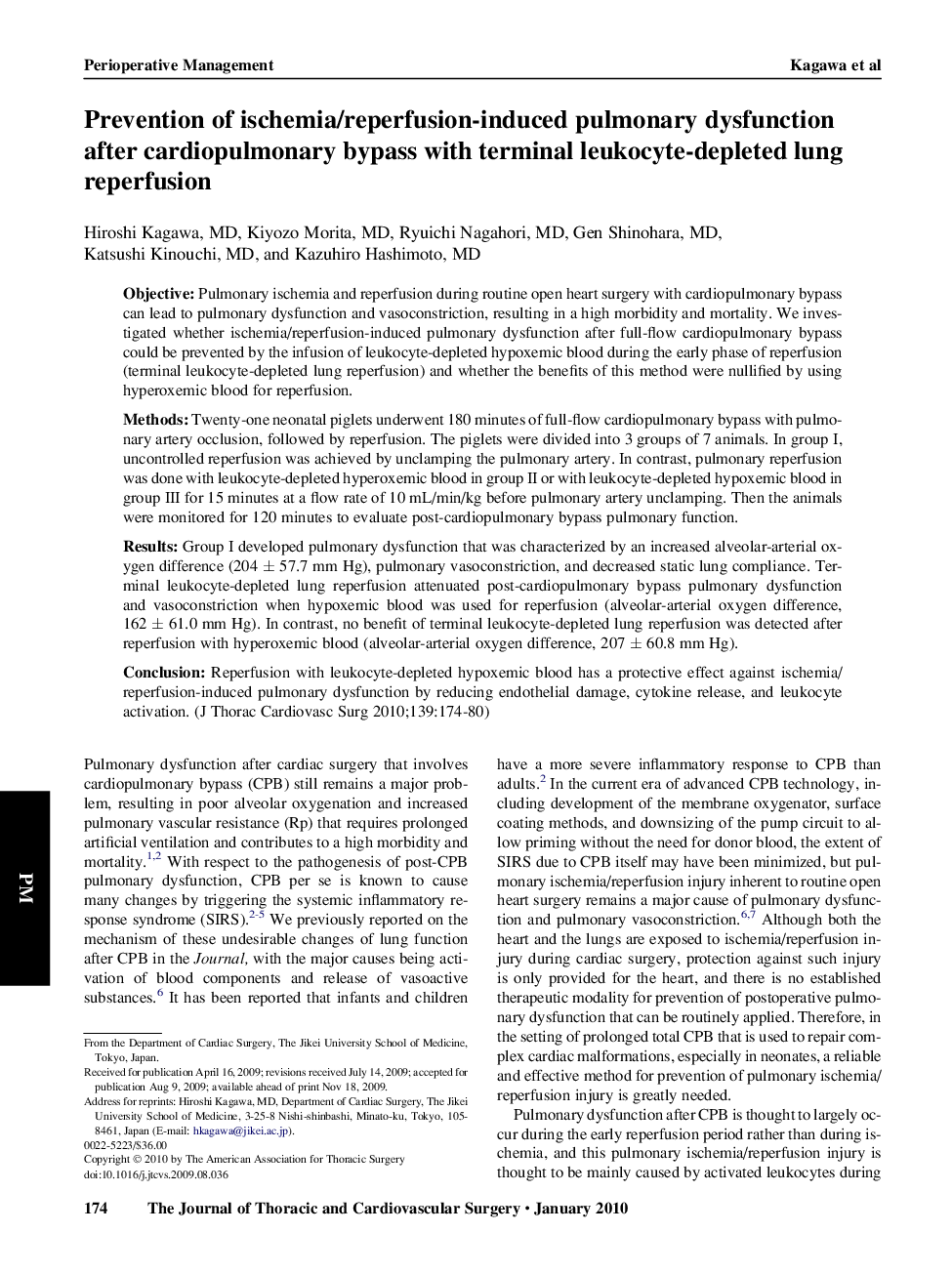| کد مقاله | کد نشریه | سال انتشار | مقاله انگلیسی | نسخه تمام متن |
|---|---|---|---|---|
| 2984722 | 1578666 | 2010 | 7 صفحه PDF | دانلود رایگان |

ObjectivePulmonary ischemia and reperfusion during routine open heart surgery with cardiopulmonary bypass can lead to pulmonary dysfunction and vasoconstriction, resulting in a high morbidity and mortality. We investigated whether ischemia/reperfusion-induced pulmonary dysfunction after full-flow cardiopulmonary bypass could be prevented by the infusion of leukocyte-depleted hypoxemic blood during the early phase of reperfusion (terminal leukocyte-depleted lung reperfusion) and whether the benefits of this method were nullified by using hyperoxemic blood for reperfusion.MethodsTwenty-one neonatal piglets underwent 180 minutes of full-flow cardiopulmonary bypass with pulmonary artery occlusion, followed by reperfusion. The piglets were divided into 3 groups of 7 animals. In group I, uncontrolled reperfusion was achieved by unclamping the pulmonary artery. In contrast, pulmonary reperfusion was done with leukocyte-depleted hyperoxemic blood in group II or with leukocyte-depleted hypoxemic blood in group III for 15 minutes at a flow rate of 10 mL/min/kg before pulmonary artery unclamping. Then the animals were monitored for 120 minutes to evaluate post-cardiopulmonary bypass pulmonary function.ResultsGroup I developed pulmonary dysfunction that was characterized by an increased alveolar-arterial oxygen difference (204 ± 57.7 mm Hg), pulmonary vasoconstriction, and decreased static lung compliance. Terminal leukocyte-depleted lung reperfusion attenuated post-cardiopulmonary bypass pulmonary dysfunction and vasoconstriction when hypoxemic blood was used for reperfusion (alveolar-arterial oxygen difference, 162 ± 61.0 mm Hg). In contrast, no benefit of terminal leukocyte-depleted lung reperfusion was detected after reperfusion with hyperoxemic blood (alveolar-arterial oxygen difference, 207 ± 60.8 mm Hg).ConclusionReperfusion with leukocyte-depleted hypoxemic blood has a protective effect against ischemia/reperfusion-induced pulmonary dysfunction by reducing endothelial damage, cytokine release, and leukocyte activation.
Journal: The Journal of Thoracic and Cardiovascular Surgery - Volume 139, Issue 1, January 2010, Pages 174–180